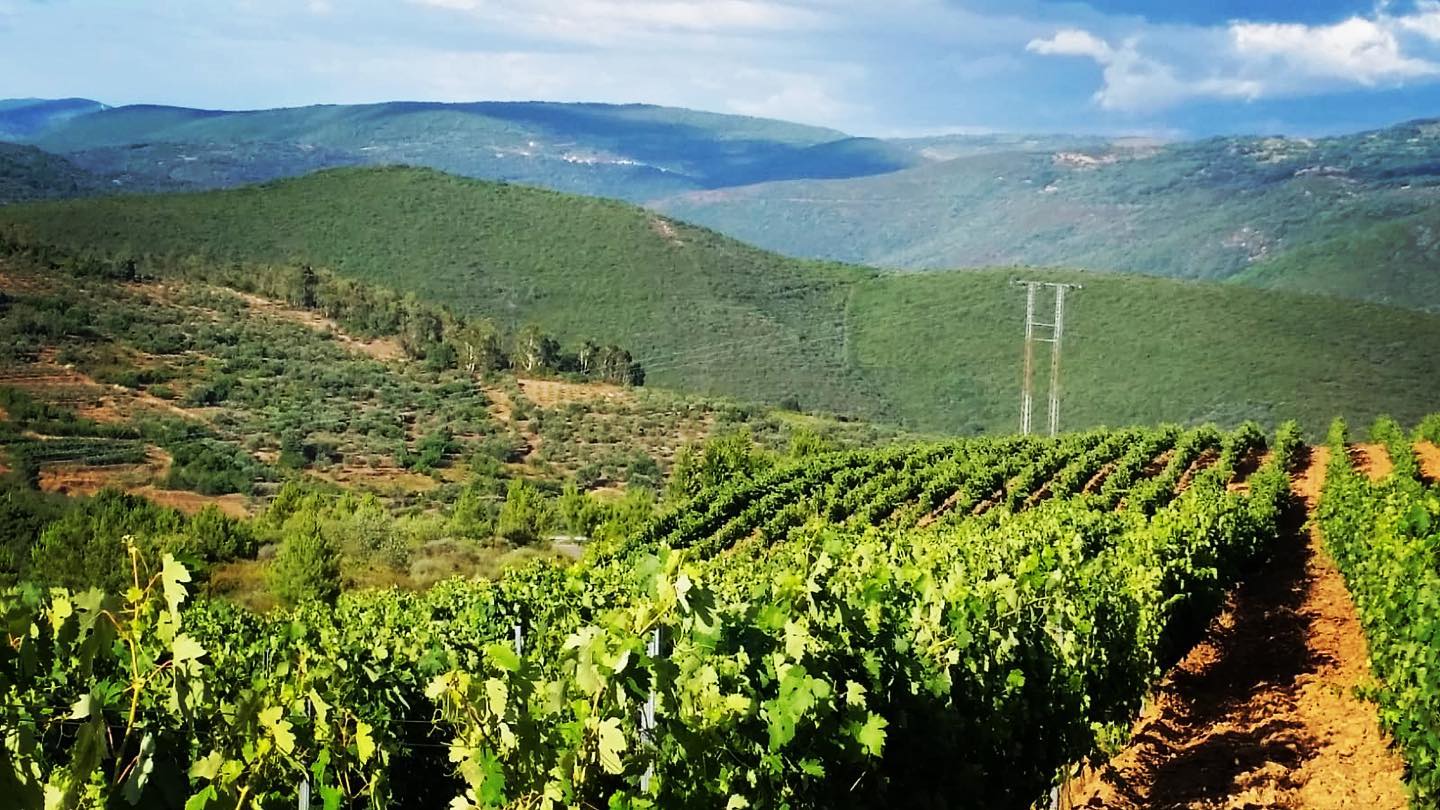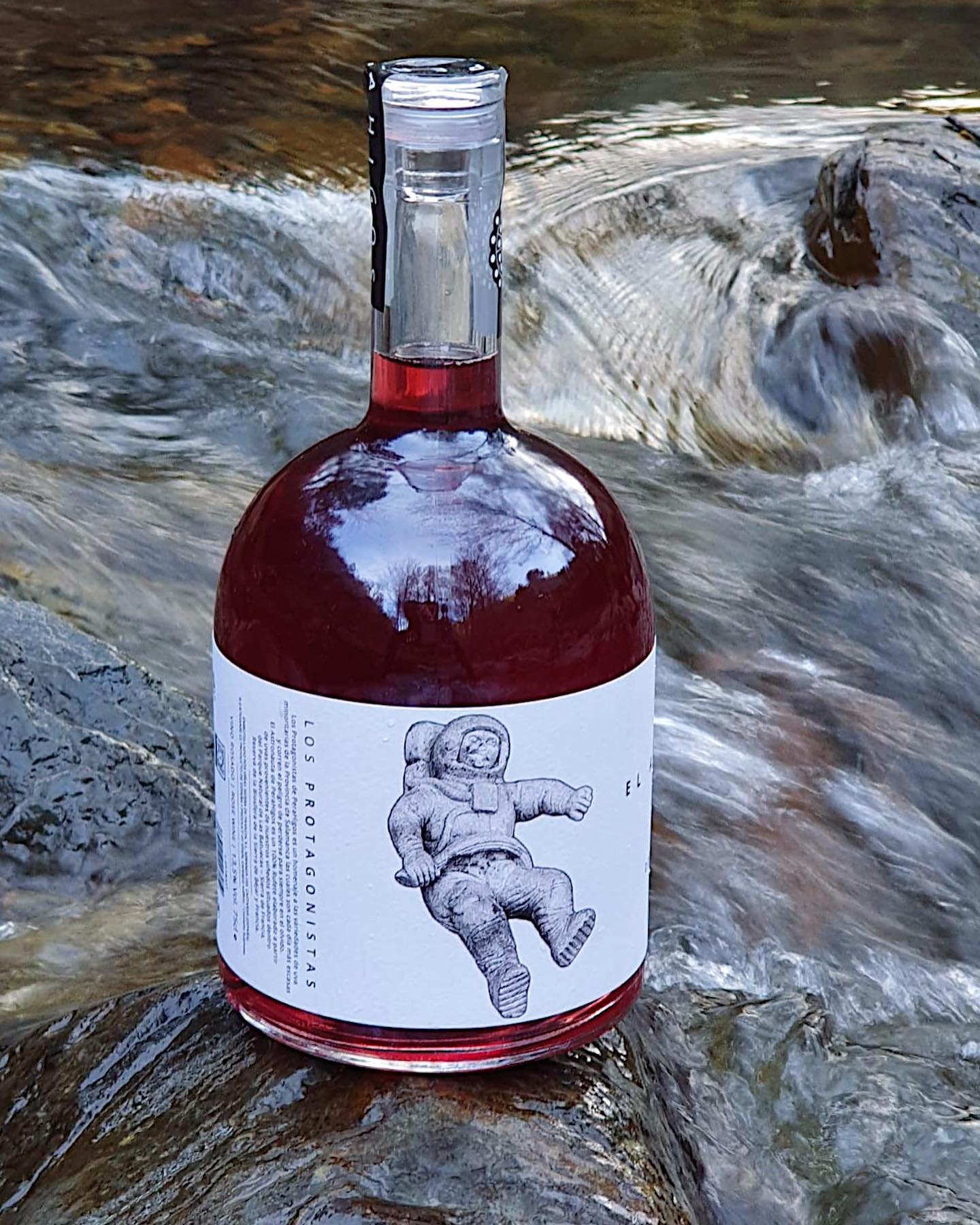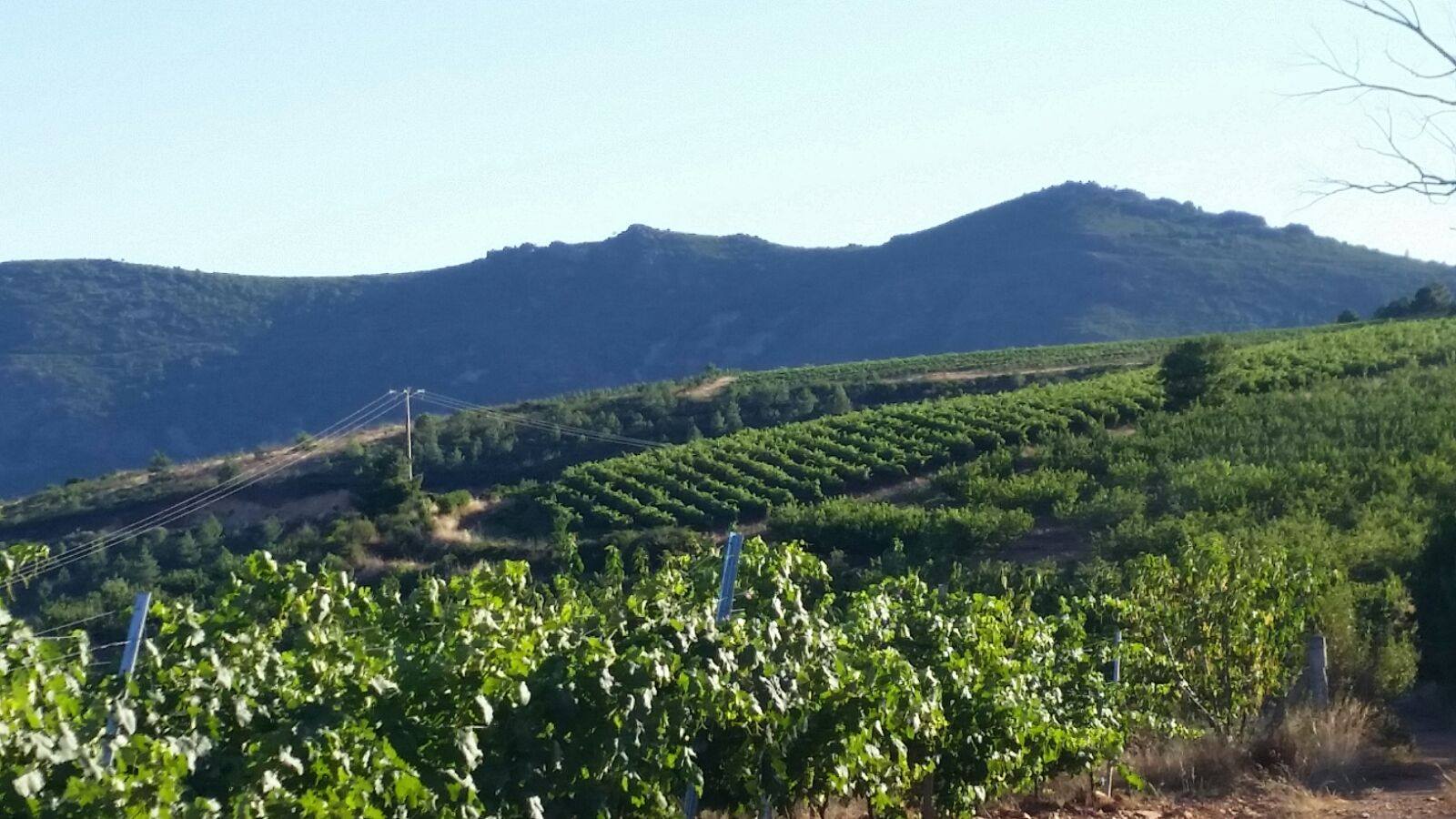A few weeks ago, I published a post about the P.D.O. Sierra de Salamanca and its wines Rufete, a Hidden Jewel in a Land of Century Vines. This post belongs to a series dedicated to the winerys of the region. Today we will take a closer look at Perahigos Winery.
"Bottle the landscape". This phrase encompases the philosophy of Perahigos Winery, located in the heart of the Sierra de Salamanca, in the village of Miranda del Castañar.
Antonio and Ambrosio Iglesias, two brothers, began this project in 2015. Since childhood, they lived alongside the vines and the wine culture of their hometown, strengthening their love for their native land. Respect for the terroir and the classic varieties of Salamanca showed the way to their present situation. Perahigos' wines stand out for their broad variety and distinct styles. However, each label represents a distinct perspective of the character of the Sierra de Salamanca.
The red varieties: Rufete, Calabrés, Aragonés and Bruñal form the pillars of Perahigos' lineup. Using these varieties, they make distinct styles depending on aging time. The red jóvenes, fresh and intense, express the primary flavours of these varieties. Crianzas strike a balance between fruit and floral aromas, and the notes provided by oak aging. Finally, the reds which are aged the longest are deep and complex, with a multi-layered experience and powerful but integrated tannins.
The vineyards at Perahigos are divided amongst 29 hectares in the villages of Sotoserrano and Miranda del Casteñar. A breathtaking view of terraced vines impresses everyone who visits. From the very beginning, the winery team has practiced ecological viticulture and abstained from the use of herbicides and pesticides, while maintaining abundant vegetation between the vines.
The wines of Perahigos reflect the diversity of its vineyards. They winery work with only 10 years old vines for its youngest and freshest wines, all the way to century vines for its most complex wines. Altitude also varies considerably from one vineyard to another, between 400m and 800m above sea level.
The vineyard soils are characteristically acidic, providing a unique identity to the wines. Sandy granite soils produce elegant and intense wines, while clayey slate soils develop deep, structured wines with hints of minerality.

Besides the classic red varieties of the Sierra (Rufete, Calabrés and Aragonés), Perahigos also grows Bruñal. Total production of this grape is tiny, and is found almost exclusively in the area of Las Arribes. Bruñal wines are very intense with powerful but silky tannins. They are characterized by high concentrations of both colour and aromas. As part of a Rufete blend, Bruñal is an interesting grape as it adds deepeness to the light freshness of Rufete.
When it comes to whites, you will find one of the mythical wines of Perahigos, a Rufete Blanco varietal. This variety was only officially recognized as its own genotype two months ago (May 2020). However, the winemakers of the Sierra have been promoting Rufete Blanco and its unique character for years. Its untuous texture, aromas of white flowers and propensity for barrel aging make it a variety worth watching.
Although Perahigos is located in the centre of the Sierra de Salamanca, the wines of the family Iglesias are registered both within the P.D.O. and the less restrictive category of Vinos de la Tierra de Castilla y León (Wines of the Land of Castilla y León).
Perahigos Wines
The wines of Perahigos are divided into two lines which pay tribute to the villages and symbols of Salamanca. The 'Nuestros Pueblos' (Our Towns) line is made up of red wines. The names of these wines are drawn from the towns of the Sierra: Sotoserrano, Miranda del Casteñar and Garcibuey.
The 'Nuestros Protagonistas' (“Our Main Characters”) line is made up of Perahigos rosés and whites. These wines are named after symbols which can be recognized by anyone who has visited Salamanca: El Sátiro (“The Satyr”) is a white Rufete Blanco varietal. El Astronauta (The Astronaut) is a Rufete rosé.
NUESTROS PUEBLOS
Miranda
The combination of Rufete, Tempranillo and Bruñal make an excellent blend: balanced, intense and expressive. The Tempranillo base provides structure and aromas of mature red fruit, while Rufete offers an elegance freshness characteristic of this variety. Finally, the small percentage of Bruñal adds deep, but smooth and sweet tannins. The grapes come from vineyards in the Las Batuecas Natural Park. With an average production of only 1.5kg per vine, these old vines produce berries with highly concentrated aromas. Miranda is aged in French oak for 12 to 18 months, where oak and balsamic aromas are developed along with a long and persistent finish. With a high alcohol level (15%), this wine is a good pairing choice for Iberian ham or local Morucha beef.
Garcibuey
This wine pays tribute to the village of Garcibuey. Tempranillo and Rufete team up to form an aromatic, medium-bodied wine with aromas of red fruit and flowers. Freshness and elegance contributed by the Rufete grapes are integrated with toasty notes which result from 6-12 months aging in French oak. Tempranillo provides a notable boost in tannins and intensity which result in a smooth and persistent finish.
Soto
Similar to Gacibuey, this is a Tempranillo and Rufete blend. It is a fresh and vibrant wine with good acidity. Soto is not barrel-aged, allowing the true character of the varieties to show. Floral and aromas of mountain herbs attributed to the Rufete are integrated with the mature red fruit and plum of the Tempranillo variety.
NUESTROS PROTAGONISTAS
El Astronauta (The Astronaut)
El Astronauta is named after one of the most emblematic symbols of Salamanca: the small Astronaut figure carved into the facade of the New Cathedral in 1992 during the Las Edades del Hombre (The Ages of Man) exposition. El Austronauta is a rosé made with Rufete grapes. You will fall in love with its delicate character, elegance and freshness. This rosé also has a noteworthy intensity and acidity. Red fruit, flowers and spices dominate, while a pleasant texture and mouthfeel make this a perfect wine to drink on its own or with food.
El Sátiro (The Satyr)
Rufete Blanco seduces winelovers with its expressiveness, unctuous texture and aromatic complexity. The grapes are grown on vines which each produce only 1kg of grapes, El Sátiro is highly concentrated, with aromas of white flowers, stone fruit. Toasty, creamy notes hint at the 8-14 months of barrel aging in French oak. El Sátiro takes its name from the facade of the New Cathedral, where a carving depicts a dragon trying to eat an icecream cone. This brave dragon defines the soul of the Rufete Blanco variety, which has recently made a strong entrance in international markets.

Interview with Mercedes Casado
Manager at Perahigos Winery
What drew the founders of Perahigos to the Sierra de Salamanca region when they decided to found the winery?
Antonio and Ambrosio Iglesias, the founding partners of Perahigos, are Garcibuey natives. They spent their entire childhood amongst the grape vines and olive trees which are the traditional crops of the area. At home, wine was always made for personal consumption, and a small vineyard was always available in which they could work. Six years ago, they took the plunge and decided to recover several hectares of nearly-lost vines and started producing quality wines. The winery acquired about 30 hectares of vines, most of which are found in the towns of Sotoserrano and Miranda del Casteñar. The work was hard, but they made progress using ecological methods. The vines don't yet have ecological certification, but we're on the right track. We believe that the way the vines are cared for is the most important step in producing wine that expresses the vineyard in which it comes from. It hasn't been an easy project, but it's been done willingly and with the main goal of doing something important with our land. We want to give back to all of our forefathers for all they gave to us through their hard work. We also want to leave our own mark, caring for what is already here and developing new projects in the future. We acquired the winery in Garcibuey and it's here where we currently work. It has been an important investment for the area, which was empty and forgotten. We want to contribute to rural development, and to help maintain the rural population, adding value to our cultural, natural, gastronomical and social offerings.
In your opinion, what are the keys to the recent success that the wines of the Sierra have experienced?
We have seen slow, but positive changes. We've had to get rid of the stereotype that wines from this region are bulk cheap wines, which has been difficult since it's an idea deeply ingrained in peoples' minds. The only way has been to do things differently, putting quality first and promoting the wines that are high quality, and then using all means possible to share the good work of the new winemakers and winerys.
What factors make the Rufete variety so unique and so tightly linked to the Sierra?
The Rufete variety is the grape that has always existed in the Sierra de Salamanca. The century vines that we have are Rufete vines. During the time when the cooperatives started developing the area, a lot of vines were changed for Tempranillo because they gave more production volume, and were easier to work in the winemaking process. Rufete grapes form clusters very close to the main vine and this makes them more difficult to harvest than Tempranillo. Bunches are small and closely packed with medium-sized berries and thin skin. Rufete isn't an easy variety, winemaking is challenging, but it is very elegant and unique.
The main player in this region is Rufete. How do the Calabrés and Aragonés varieties fit in?
The Calabrés variety is Garnacha Tinta and Aragonés is Tempranillo. In reality, they're clones of the main variety. These grapes have adapted perfectly to our soils and climates thanks to centuries of evolution, giving them a unique profile that's different from other grapes of the same varieties. Calabrés is not very common at all, but Aragonés is more widespread.
What can winelovers look forward to in the white varieties of the Sierra?
Recently, after ten years of negotiation, Rufete Blanca has been recognized as its own variety with a unique genotype. Probably the 2020 harvest will be the first to sell wines with this variety in the P.D.O. of Sierra de Salamanca. This is going to help link us even more tightly to the Rufete variety. In the Sierra, it was known as Verdejo Serrano although it is nothing like the main grape in Rueda. It was used mainly to improve acidity levels of red wines. Nowadays, several wineries in the P.D.O. are making wines with this variety and a few, such as is our case, have been planting new Rufete Blanco vines in the hopes that this moment would arrive. Five years ago, we planted 1.5 hectares and now we're planting another 1.5.
For white wine lovers, Rufete Blanco has a lot of potential. It is high in acidity and has noteworthy tannins, making it one of the few white varieties with good aging potential in a world where most whites are designed for early consumption. It's a grape that is well-adapted to the various soil types in our area, both granite- and slate-based. It is a variety with a long ripening time and it matures late in the season; in fact it's the last grape we harvest. As for it's flavour profile characteristics, it has white flower aromas, and is full-bodied, subtle and lasting on the palate.
How is the relationship amongst the nine wineries in the P.D.O.?
The relationship is good. I am part of the managing committee, acting as secretary, and being such a small P.D.O., it's easier to understand one-another. It's a young D.O.P., it was founded in 2010, and has fought to be known as a producer of quality wines. The producers in the P.D.O. work together to show those in the hospitality industry as well as consumers the great potential of the local varieties and the unique characteristics of our terroir, which isn't found elsewhere in Spain. This is truly a shared philosophy, we have inimitable soil, a local grape with great potential, winemakers and grape growers with a great desire to produce high quality products. Most of the wineries have modern cellars, however, we all respect the traditional growing methods and bet on our local grape. We also share the challenge of sharing this message with the consumer. Working together, we can unite our collective efforts and motivate consumers to enjoy local products.
What ideas and goals are the producers of the P.D.O. working on for the near future?
The main goals are focused on making our D.O.P. known both within Spain as well as internationally, developing wines which more closely represent our terroir and conserving the existing vines. The wineries of the Sierra want to turn our industry into one of the forces for sustainable development in the area. Practically all the wineries are owned by people who come from the Sierra de Francia and have bet on it's success.
To wrap up, can you recommend a pairing for your main red and white wines?
Our red Garcibuey de Perahigos, a blend of Rufete and Tempranillo, pairs perfectly with Serrano Stewed Goat. Our white El Sátiro, which is a Rufete Blanco varietal, with almost a year in barrel, pairs well with Limon Serrano {{LINK}}, a local favourite.


